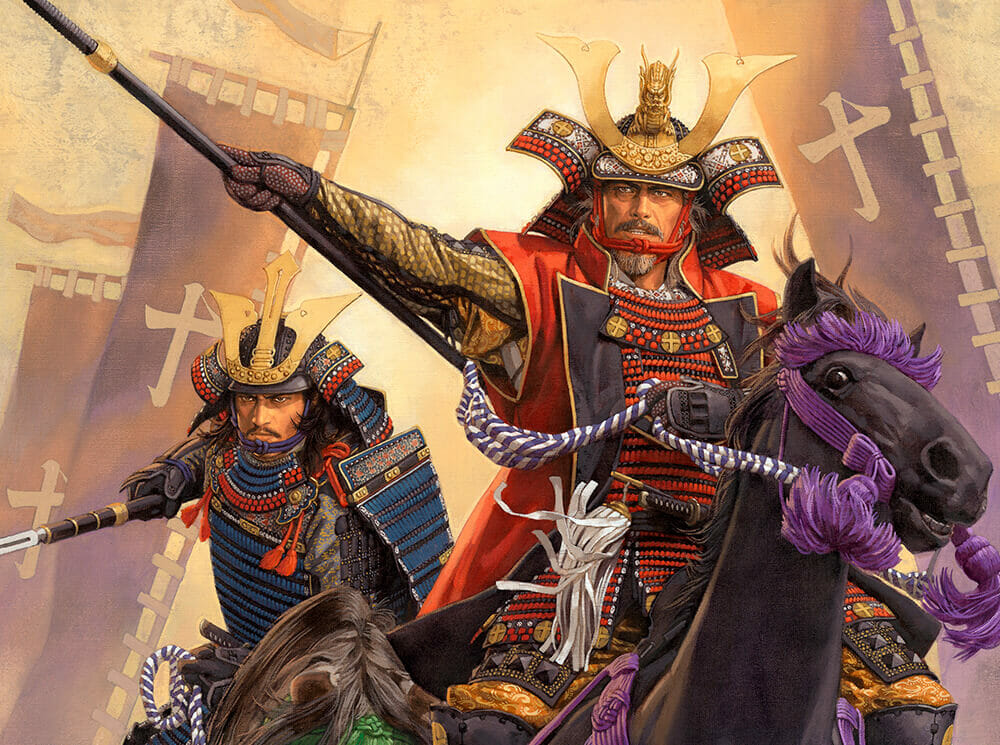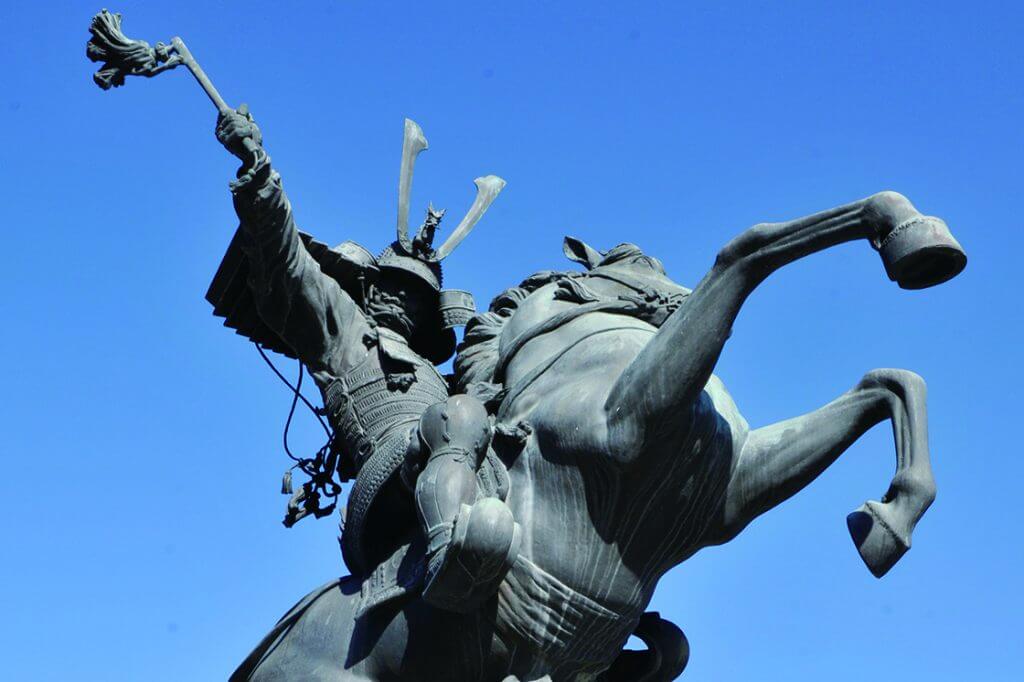
Shimazu Yoshihiro was one of the most skilled generals of the Sengoku period (1467-1615) and the 17th head of the Shimazu clan.
Yoshihiro and his three brothers managed to subjugate nearly the whole of Kyushu before being pushed back to Satsuma by regent Toyotomi Hideyoshi in 1587. Following this, Yoshihiro fought in Hideyoshi’s Korean Invasions earning the nickname “Demon Shimazu” for his fearsome exploits on the battlefield.
Following the death of Hideyoshi in 1598, Japan was thrown into turmoil as a power struggle broke out and rival factions clamoured to seize total power over the country.
Tokugawa Ieyasu, one of Hideyoshi’s council of elders, saw an opportunity to consolidate his power and make a challenge for the title of Shogun. However, another council member, Ishida Mitsunari, and his allies, mainly from the south and western parts of Japan, opposed Ieyasu and his supporters from the north. The conflict began on the 21st of October 1600 at Sekigahara in the province of Mino.
The battle that followed was the most decisive in Japanese history and would bring about the end of the turmoil of the Sengoku period and see the establishment of a military government under the Tokugawa Shogunate that lasted until the Meiji Restoration in 1868.
The Western forces under Ishida Mitsunari gathered under cover of heavy fog on the western side of Sekigahara in a solid defensive position, with their flank guarded by Kobayakawa Hideaki. The eastern forces under Tokugawa Ieyasu approached from the east. Both armies had over 80,000 men.
At 8 am, the fog cleared, and both sides had the chance to assess the battlefield. At 10 am, the battle began. Both sides advanced and retreated in skirmishes until around midday, when Kobayakawa and his army switched sides, attacking the Western army. This betrayal led to a chain of events that eventually saw the Western side crumble and the victory of the Tokugawa army by 2 pm.
Yoshihiro and the Western Army
Before the Battle of Sekigahara began, regional lords around Japan were placed in the difficult position of choosing to support either the Western or Eastern army. Shimazu Yoshihiro ended up joining the Western army with no precedent to aid in deciding and having been embarrassed by being refused entry to the Tokugawa-held Fushimi Castle.
Yoshihiro sent word to Satsuma to send reinforcements. Still, his elder brother Yoshihisa was reluctant to send men to fight in a conflict involving Satsuma in central politics. So Yoshihiro was left with an army of only 1,500 men.
As the battle started, Yoshihiro and his samurai held their position and refused to move as the Eastern forces attacked. Yoshihiro repeatedly ignored the orders of Ishida Mitsunari and held his ground. Only when Kobayakawa defected to the eastern side did Yoshihiro decide to act. Still, by now, the Tokugawa army surrounded his small force. Yoshihiro faced a bleak outlook with the crushed Western army and no way of escape.
What followed was the most legendary escape in Japanese history.
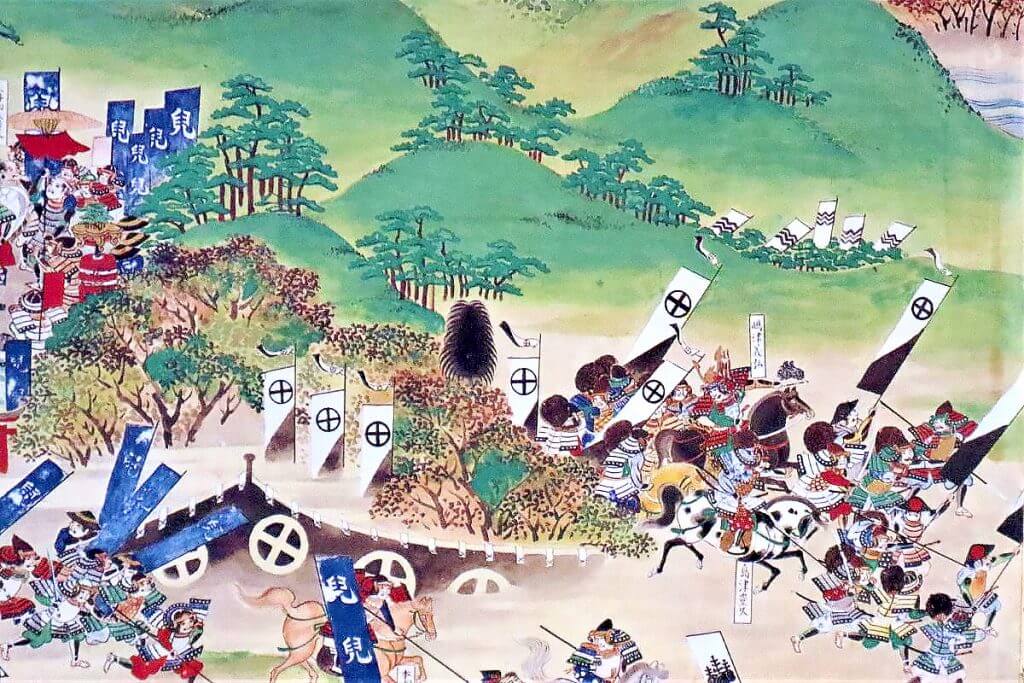
Charging the Enemy
Yoshihiro ordered his men to charge straight into the main body of the Tokugawa force of over 30,000 men. Resolved to die, the Shimazu samurai made their attack, the ferocity of which caused the surprised Tokugawa force to open up, allowing the Shimazu to pass right next to Tokugawa Ieyasu and his inner guard.
Kobe Kugoro explained the initial attack in the following manner.
Lord Yoshihiro asked me, “Where is the enemy force strongest?”
I replied, “On the eastern side, my lord.”
Lord Yoshihiro said, “Attack the middle of the strongest section”.
We charged the middle of the enemy force, leaving bodies strewn on either side. Finally, I looked up to find my allies and saw Lord Yoshihiro with a group of only about fifty men.
We regrouped and were confronted by samurai of the Fukushima clan, but we could not tell if they were allies or enemies. Finally, Lord Yoshihiro shouted, “If they are the enemy, cut through them! If you can’t cut through, commit seppuku immediately!”
We closed to about ten metres from the enemy, then five. Then, at the last minute, we all drew our swords together and let up the battle cry “ei! to!” at which they moved aside and let us pass by.
The enemy troops may have moved out of the way, but they intended to cut down the Shimazu samurai from behind as they fled the battlefield. The protect the rear, Yoshihiro used a unique tactic to buy time and slow the advance of the units they had passed.
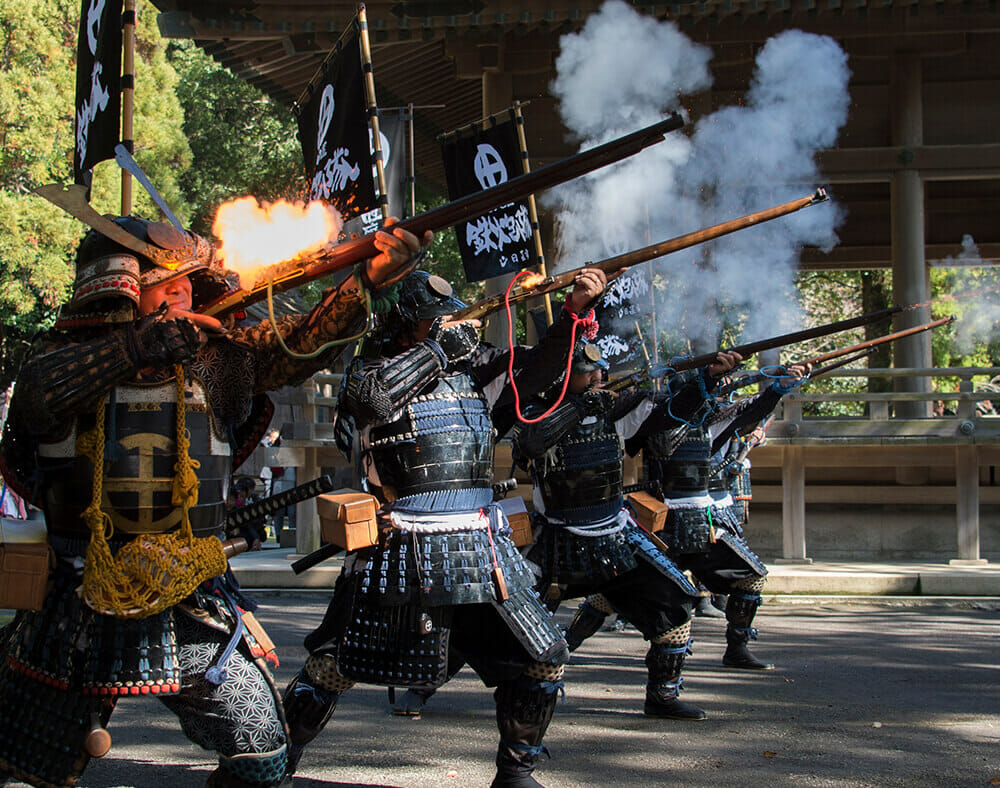
Sutegamari – Self-Sacrifice for the Lord
It is commonly believed that Yoshihiro employed a tactic called sutegamari to break through the enemy lines and make his retreat. This tactic, also called zazenjin, requires a group of samurai to fall behind the main force and act as a decoy by sitting on the ground cross-legged while firing matchlock rifles at the enemy. The decoy force would be overwhelmed and trampled to death, buying enough time for the main detail to flee.
Contemporary accounts paint a slightly different picture, showing that the fighting was so heavy that the Shimazu samurai had no time to execute the sutegamari plan in an orderly fashion. Instead, the men became focused on combat, only returning to their senses once they had escaped the battlefield.
Hirayama Kurozaemon left the following account of the tactics used to slow the enemy and how they played out in battle.
We were ordered to only fire on the enemy once they were right in front of our eyes. When the enemy was close enough, we all fired at once. After that, the enemy mixed in with our ranks and the rifles became useless.
Some pushed their rifles into their belts; others tied them onto their back like biwa, and others threw them away. I drew my sword and closed on the enemy. Lord Toyohisa was fighting right at the front. The enemy totally surrounded us, and the fighting was so intense we couldn’t tell friends from foes.
Despite being massively outnumbered, Yoshihiro and his men managed to break through the first lines of the enemy army. Still, trouble was ahead as they were about to face two of the Four Heavenly Kings – the most feared generals in the service of Tokugawa Ieyasu.
In response, Tokugawa Ieyasu’s son Matsudaira Tadayoshi and two of the highly feared Four Heavenly Kings of the Tokugawa, Ii Naomasa and Honda Tadakatsu, were dispatched to respond.
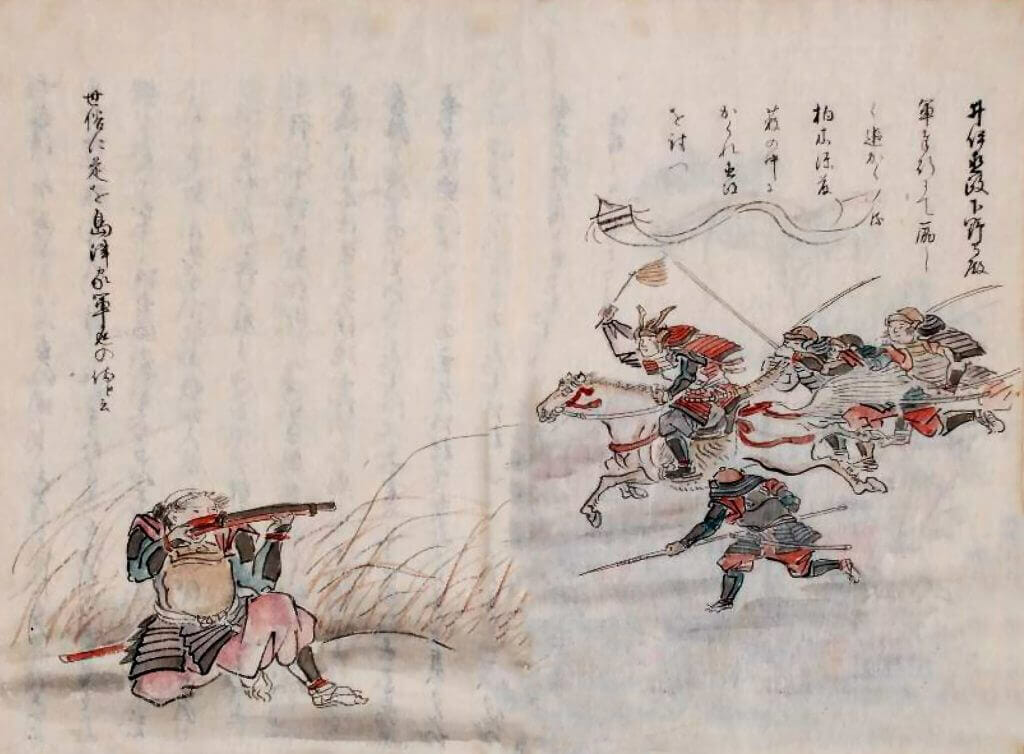
Attacked by the Ii Clan
Ii Naomasa’s attack on the Shimazu force was particularly savage, killing many and leaving Yoshihiro surrounded by the Ii forces. One Shimazu samurai saw Ii Naomasa approaching, shouting, “Quickly! Shoot Yoshihiro!” at his men.
A Satsuma samurai named Kashiwagi Gendo took this opportunity to take a shot at Ii Naomasa, hitting him squarely in the chest and knocking him off his horse, allowing Yoshihiro to make his escape.
Chosa Hikozaemon Munetoki reported the clash with the Ii clan in the following manner.
There were 50 or 60 men around Lord Yoshihiro, in tight formation and surrounded by the Ii forces. Ii Naomasa appeared wearing a splendid suit of armour and brought his horse close to where Yoshihiro was, shouting angrily at his men, “What are you doing? Hurry up and shoot Yoshihiro!”
Then, Kashiwagi Gendo took aim and shot Ii Naomasa in the chest with his matchlock rifle, causing him to fall off his horse. The enemy was shocked that their general had been downed, and Lord Yoshihiro shouted, “Now! Cut them all down!”
We cut our way through the enemy force and headed towards the edge of the battlefield.
Ii Naomasa survived the battle but died one year later because of his wounds. Matsudaira Tadayoshi and Honda Tadakatsu were also injured fighting against the Shimazu clan.
It was unusual for high-ranking samurai to be seriously injured or killed during battle unless they left their encampments and fought on the front lines. Kashiwagi would undoubtedly have been praised for taking down such an important figure. The matchlock rifle he used to shoot Ii Naomasa is currently in the collection of the Shoko Shuseikan Museum.
After breaking through the lines, Shimazu samurai once more found themselves surrounded by enemies looking to take Yoshihiro’s head.
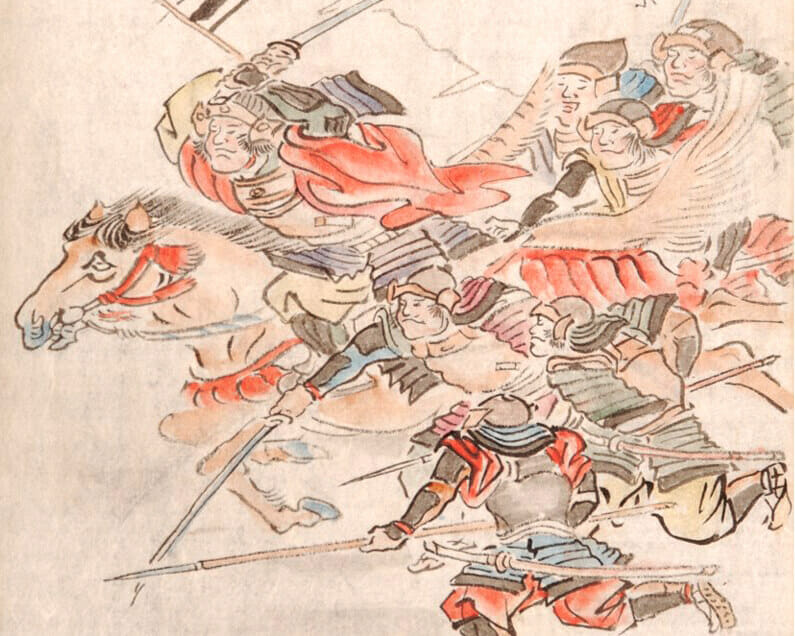
The Disappearance of Shimazu Toyohisa
During the skirmish, senior retainer Ata Chojuin and Shimazu Toyohisa were killed protecting Yoshihiro. The remaining Shimazu samurai attacked the enemy shouting, “I am Shimazu Yoshihiro!” to draw attention away from their general and confuse the enemy soldiers. This is when Toyohisa seems to have been separated from the main force and disappeared. Unfortunately, there is no record of how he met his demise.
Chosa Hikozaemon Munetoki left this account of the last time he saw Toyohisa.
After escaping from the Ii force, we were once again surrounded by the enemy. This time Ata Chojuin shouted, “I am Shimazu Yoshihiro!” while charging at the enemy and was cut down.
I was separated from Lord Yoshihiro in the intense fighting. While I was looking for him, I met with Toyohisa. I asked Toyohisa where the lord was, but he did not know. Finally, after a while of fighting with Toyohisa, he turned to me and said, “Someone is calling for Chosa Munetoki! Go and look!”
I left Toyohisa behind and found Lord Yoshihiro and a few of our men surrounded by a large enemy group.
Toyohisa died on the battlefield. The suit of armour he is said to have worn has been passed down in his descendants’ family and is now in the collection of the Shoko Shuseikan Museum. The blue-laced armour has holes on both sides made by spear thrusts and has been cut by swords in several places, showing the gruesome demise he must have met at the hands of the enemy.
Yoshihiro and his men made it to the edge of the battlefield at Sekigahara, but now they faced another challenge – the journey of almost 1,000 kilometres back to their homeland in Kagoshima while being hunted down by Tokugawa search parties.
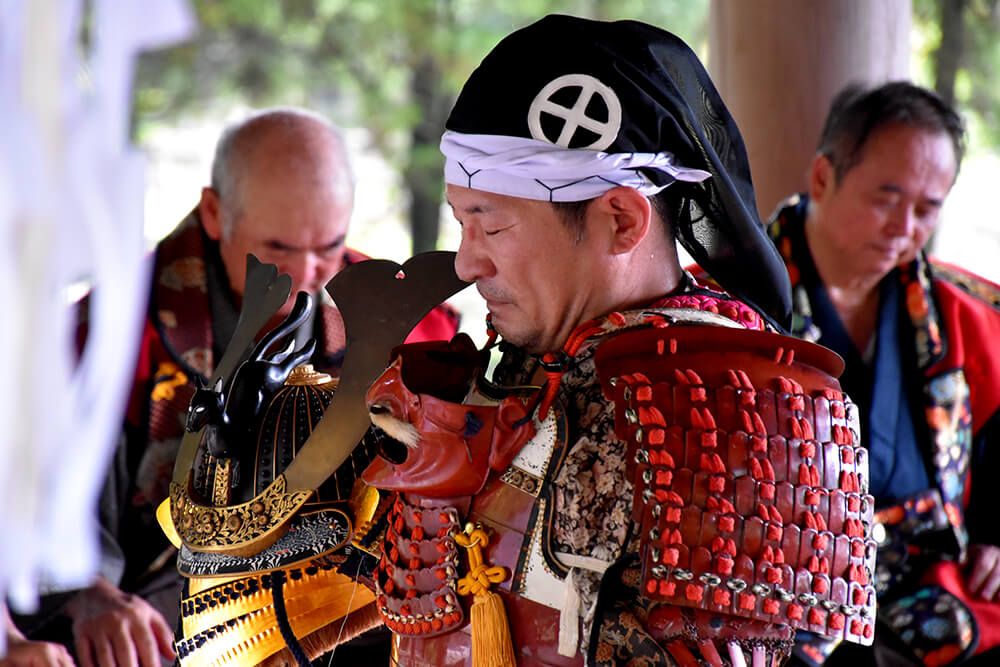
The Long Road Home
After Yoshihiro and a handful of men managed to break through the enemy lines, they began heading south towards a place known as Komano. From here, they headed west, but along the way got lost several times and were involved in repeated skirmishes with search parties.
Exhausted and with no supplies or food, they turned to trying to take food from peasant settlements but found that this only drew attention. Groups of peasants armed with farm tools also chased down exhausted stragglers and beat them to death.
The Shimazu samurai were forced to kill and eat their horses but refused to give the meat to Yoshihiro, as priority was given to the men that would have to fight to defend him if they were attacked.

Finding Help at Sumiyoshi
The ragged group finally managed to reach Sumiyoshi in southern Osaka, where the founder of the Shimazu family line had been born over 400 years earlier. Here they split into smaller groups to be less conspicuous and secured the help of local merchants who profited from trade with Satsuma. To prove his loyalty, a merchant named Shioya Magoemon sat his three-year-old grandchild on Yoshihiro’s lap, ensuring they wouldn’t betray the weary band of samurai.
With the help of the local merchants, Yoshihiro could also free his beloved wife Saisho and his son Tadatsune’s (later Iehisa) wife Kameju from Osaka Castle before the band of survivors headed home for Satsuma by boat.
Hirayama Kurozaemon left the following account.
We knew of a lacquerware merchant named Tanabe in nearby Sumiyoshi, so we sent a messenger ahead to speak with him. The men moving together would draw attention from here onwards, so we ordered them to disband. The men disagreed, and some committed seppuku.
We ordered them to calm themselves, and they became complicit. Lord Yoshihiro rode in a women’s palanquin sent by the merchant Tanabe to Sumiyoshi, taking only Oshige Heiroku with him.
The rest of the men broke up into small groups and, under cover of night, made their way into Sumiyoshi and Osaka. Unfortunately, Sumiyoshi turned out to be more dangerous than expected, so we moved to Sakai after being introduced to a merchant called Shioya Magoemon by Tanabe.
Kobe Kugoro left the following account.
At Sakai, we hid in the house of a merchant called Shioya Magoemon. Even at Sakai, the Tokugawa search parties cut down five to ten men a day fleeing from the defeated Western army.
Shioya sat his three-year-old grandchild on Yoshihiro’s lap and said, “Children show the character of their parents. Please trust me.”
The merchants of Osaka were so keen to help the Shimazu forces because of simple economics. When trading with China and Southeast Asia, the merchants’ ships had to pass through Shimazu territory in Kagoshima before leaving Japan. So by helping Yoshihiro and his men in their most desperate time of need, they could guarantee a strong relationship and hopefully preferential treatment.
In the case of Tanabe, this paid off. Mitsubishi Tanabe Pharma, one of Japan’s largest pharmaceutical companies, was started by the direct descendants of the Sumiyoshi merchant who helped the Satsuma samurai. Shimazu Yoshihiro gave Tanabe a set of swords and valuable medicine used on the battlefield to express thanks for risking his life in aid of the Satsuma samurai. After that, Tanabe began selling the medicine, laying the foundations for the medical business founded by his descendants.
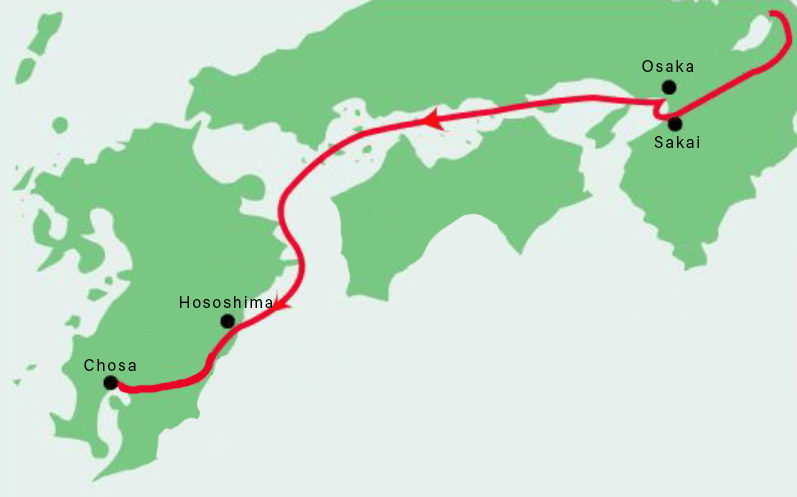
Returning to Satsuma
With the help of the merchants of Sumiyoshi and Sakai, the Shimazu forces could secure boats for passage back to their homeland of Kagoshima. After regrouping at the port, the remaining Satsuma samurai boarded the ships. Then, they set off west on the Seto Inland Sea.
As the boats approached Higo (Oita), they were attacked by ships belonging to Kuroda Kanbei; an intense battle followed, and many Satsuma men were killed and wounded. After shaking off their attackers, Yoshihiro and his men landed close to Hososhima in Hyuga (Miyazaki). From here, the remaining men entered familiar territory, crossing the mountainous Kirishima region before arriving at Tomikuma Castle to report to Yoshihiro’s elder brother Yoshihisa. One can only imagine the conversation that was had after Yoshihisa refused to send help before the Battle of Sekigahara.
After speaking with Yoshihisa, the surviving samurai headed to Yoshihiro’s base in nearby Chosa. Of the 1,500 men that fought at Sekigahara, less than 80 returned with Yoshihiro. The journey back to Satsuma took 19 days, pushing the highly experienced and battle-hardened Satsuma samurai to their limits.
Some fifty years after the battle, one samurai who survived Sekigahara as a teenager was asked how they escaped, having never talked about his experiences. He simply burst into tears, showing that war trauma was as real over 400 years ago as it is today.
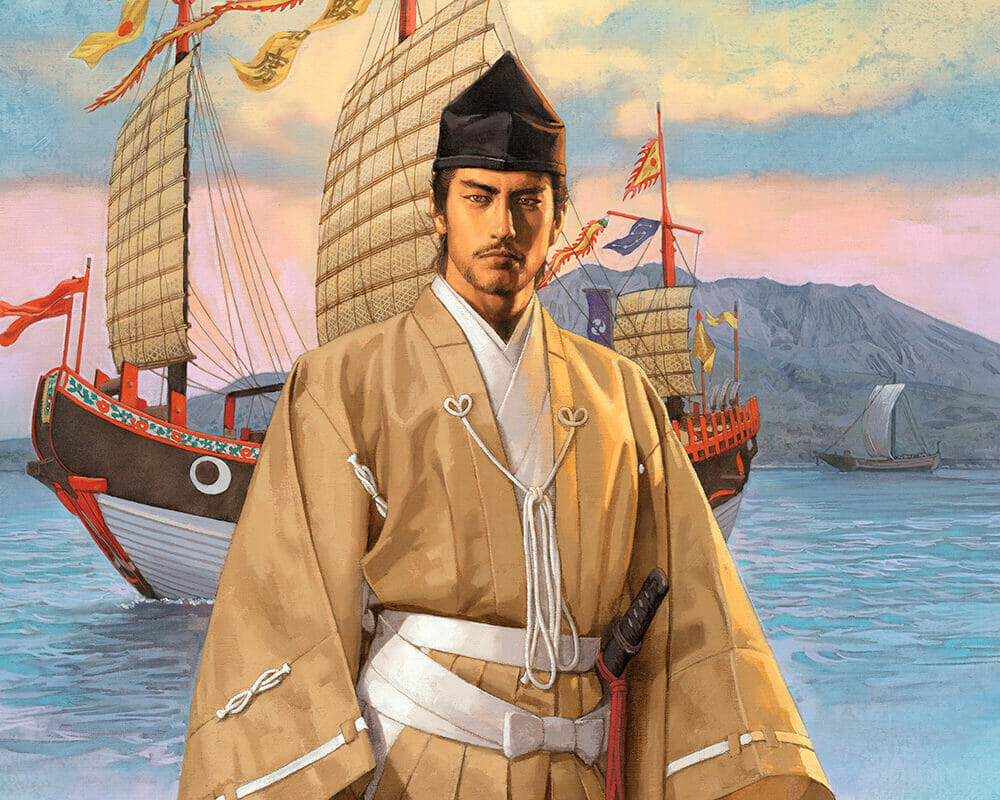
The Aftermath of Sekigahara
Following the return to Kagoshima, Yoshihiro moved from Chosa to Sakurajima, leaving his brother Yoshihisa and son Tadatsune (Iehisa) to repair relations with the Tokugawa clan, who now had no opposition to claiming the title of Shogun.
Yoshihisa sent a letter to Tokugawa Ieyasu explaining that Yoshihiro had no option but to join the Western army. He offered his apologies for standing against Tokugawa’s rule. The letter also stated that preparations were being made to fight to the bitter end in Satsuma if forgiveness was not granted.
After a year and a half of deliberations, an agreement written by Ieyasu’s hand, allowing their own domain’s autonomy, was sent to the Shimazu clan. Tadatsune then travelled to Fushimi Castle in Kyoto to meet with Ieyasu, express his thanks, and pledge loyalty to the new regime. In return, Tadatsune was awarded the name Matsudaira Iehisa. This unprecedented honour repaired the rift between the Shimazu and Tokugawa clans and prevented further unnecessary conflict.
